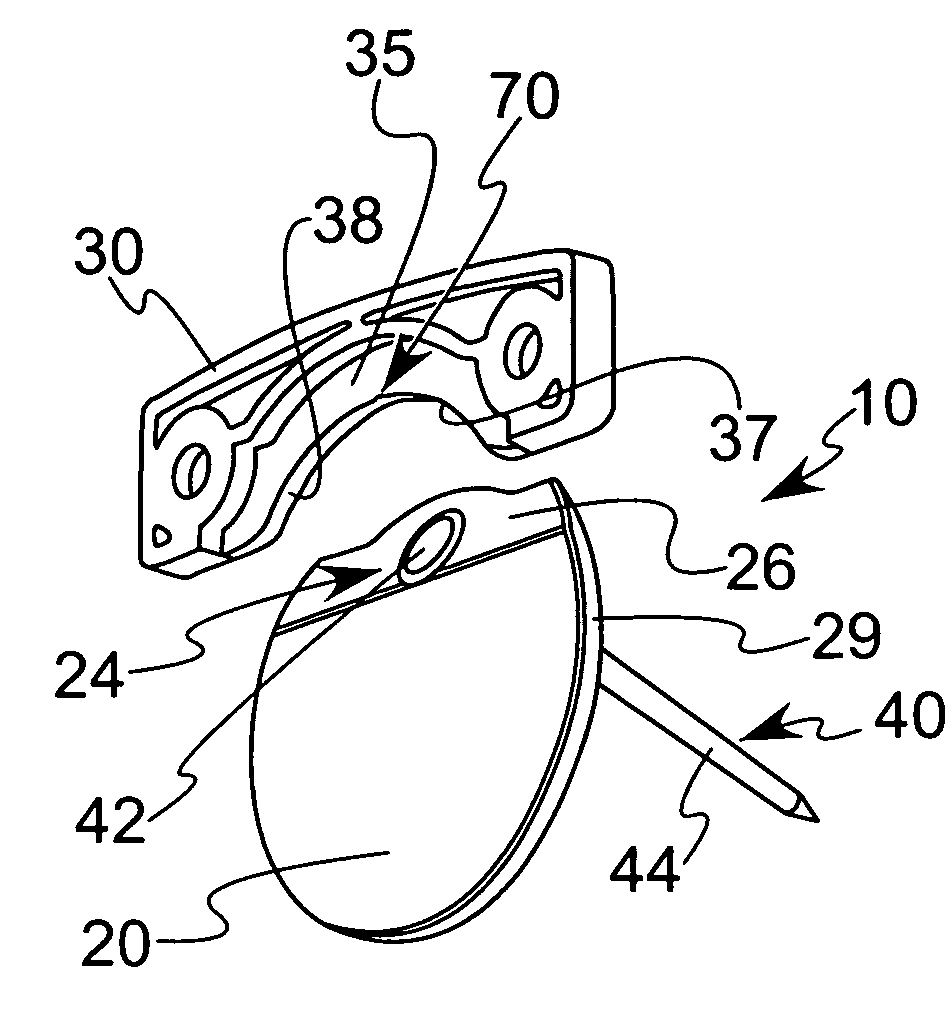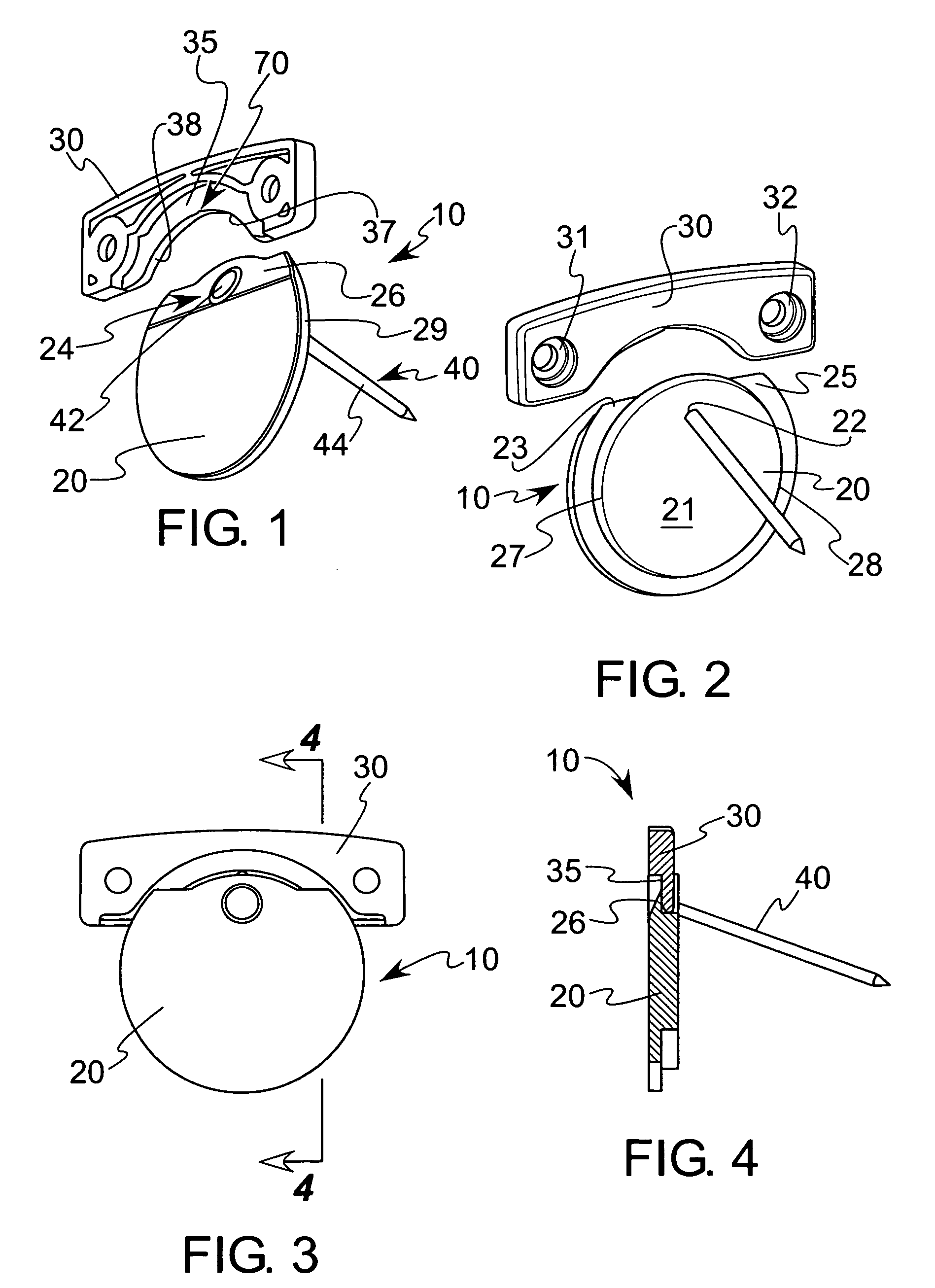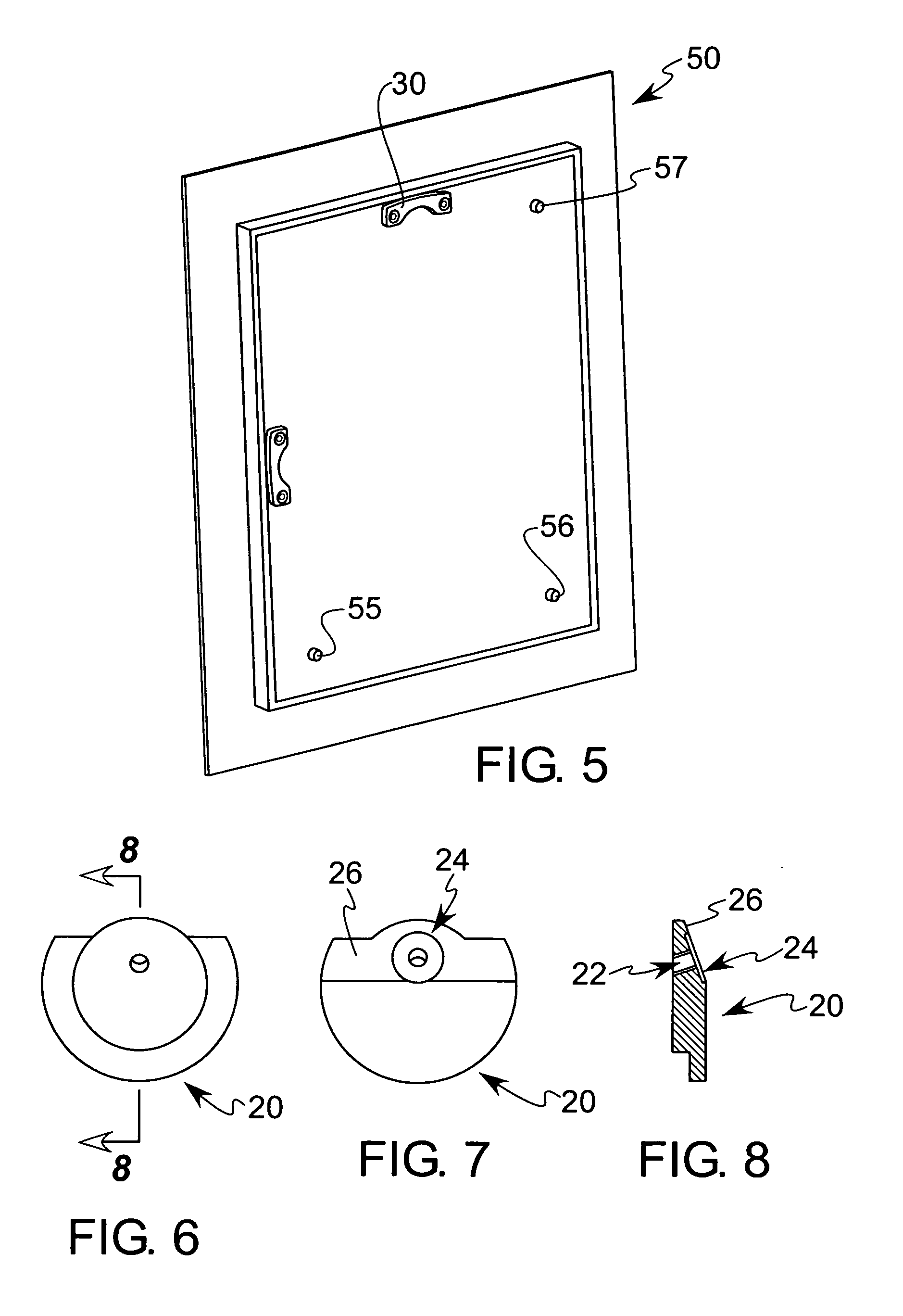Wall frame hanging apparatus
a technology for hanging apparatuses and wall frames, which is applied in the direction of hinges, machine supports, manufacturing tools, etc., can solve the problems of difficult to ensure that difficult for the user to “find”, and the user is usually unable to see whether the frame is correctly mounted on the fastener. , to achieve the effect of facilitating the rotation of the hanger, reducing the movement of the hanger, and large surface area
- Summary
- Abstract
- Description
- Claims
- Application Information
AI Technical Summary
Benefits of technology
Problems solved by technology
Method used
Image
Examples
Embodiment Construction
[0058] The preferred embodiment of the present invention is illustrated in FIG. 1, which shows the hanging apparatus 10 having a plate 20, a hanger 30 and a fastener, such as the nail 40. The plate 20 is preferably a flat sheet of relatively strong material, such as plastic, metal, wood or a composite material, and has an aperture 22 near its upper edge, as shown in FIGS. 1 and 2. The nail 40 has a shaft 44 that extends through the aperture 22 and into a wall, as described further below. The nail head 42 seats in a recess 24 formed on one side of the aperture 22, causing the top of the nail head to lie essentially flush with, or slightly above, the plane of the surface in which the aperture 22 is formed.
[0059] The plate 20 has a chamfered edge 26 formed on its upper end as shown in FIGS. 1, 7 and 8. This edge 26 is angled relative to the parallel, major faces of the plate 20 by approximately 20 degrees, although the angle can vary between a few degrees and almost 90 degrees. The ap...
PUM
 Login to View More
Login to View More Abstract
Description
Claims
Application Information
 Login to View More
Login to View More - R&D
- Intellectual Property
- Life Sciences
- Materials
- Tech Scout
- Unparalleled Data Quality
- Higher Quality Content
- 60% Fewer Hallucinations
Browse by: Latest US Patents, China's latest patents, Technical Efficacy Thesaurus, Application Domain, Technology Topic, Popular Technical Reports.
© 2025 PatSnap. All rights reserved.Legal|Privacy policy|Modern Slavery Act Transparency Statement|Sitemap|About US| Contact US: help@patsnap.com



